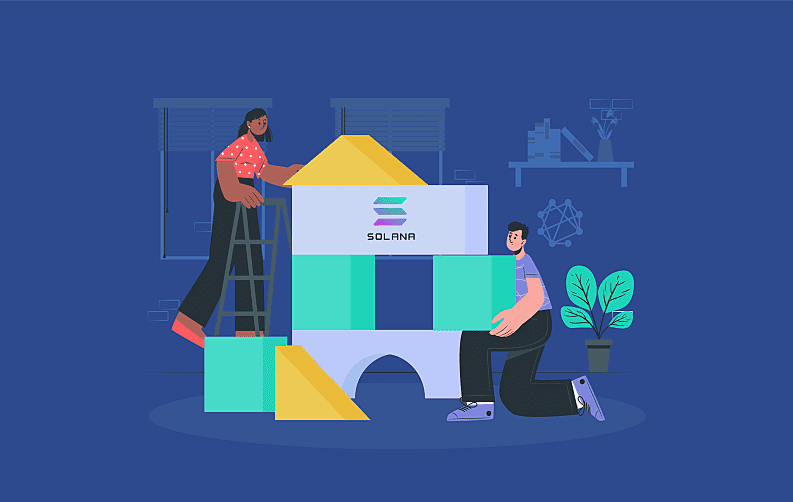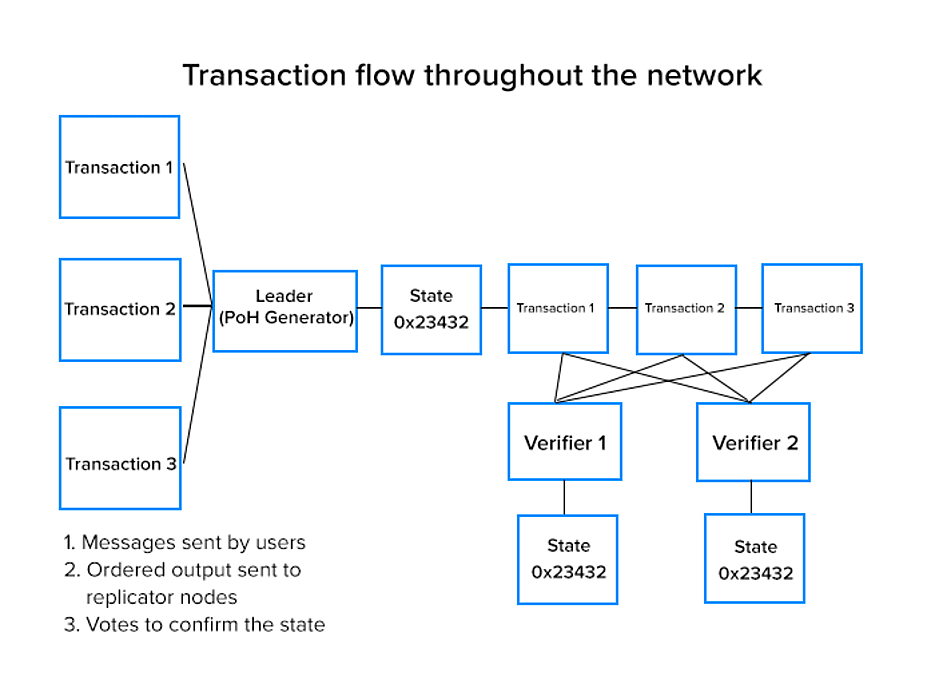
Solana (SOL) is a blockchain network designed to prioritize the scalability concept. Solana is capable of processing more than 50K transactions per second that is way faster compared to any other blockchain existing at the moment.
The Solana blockchain uses concepts such as proof of history, PBFT, and Turbine propagation tools, among others. Currently, due to its fastest transaction speed, Solana blockchain has attracted financial crypto institutions such as FTX exchange.
Moreover, Solana has also gained popularity among top blockchain companies. Therefore, the race of either joining Solana or inventing a better technology has begun. But Solana has definitely opened opportunities for the development of better apps such as finance, banking, or payment apps.
What is Solana? - An Introduction
In 2017, Solana platform was founded by Anatoly Yakovenko. The Solana crypto is designed to provide a platform to app developers so they can build decentralized applications. With protocols such as Proof-of-History and Proof-of-stake, Solana blockchain focuses on blockchain security as well. Solana blockchain is capable of processing 50 to 65K transactions per second. Theoretically, the number touches 70k as well.
History of Solana- A glimpse into the origin
Anatoly Yakovenko, who also worked for Qualcomm and Dropbox previously, observed Bitcoin and Ethereum closely. Later, with Greg Fitzgerald and Eric Williams, the trio conceptualized Solana crypto. The blockchain uses timestamps to increase the speed of crypto transactions exponentially. Moreover, without having to sacrifice security and the decentralization, this concept was officially released to the world in 2017 in the form of a white paper.
How does Solana work? - A dive into technicalities
Now after understanding the background of Solana technology, let’s have a look at the answer to this question. As mentioned earlier, Solana crypto uses Proof-of-history to timestamp the transactions. Every 400ms, Solana blockchain generates a new transaction, Solana uses SHA256 to timestamp them. The native token Solana uses is called SOL. Currently, there are 27 million Solana coins being circulated around the world. However, the maximum supply is limited to 494 million Solana coins.

If we get into more technical terms, Solana blockchain is supported by 200 physical nodes. Moreover, if GPUs are used as well, then Solana is capable of processing up to its maximum power i.e. 50k TPS. Each transaction that Solana crypto evaluates, gets a hash and a count. PoH plays a major role in that. The purpose is to keep a record of the time when a transaction occurred.
Innovations of Solana
In the blockchain industry, Solana has brought a few innovations. Let’s have a look at them and their contributions.
1. Archivers- The Archivers are used for the data storage that they pick from nodes. Nodes are generally hardware where the initial form of data is stored. Then, from there, the data is uploaded on Solana networks and saved into Archivers.
2. Proof-of-History (PoH)- The PoH algorithm is used to track transactions and their history. The purpose is to increase the efficiency and speed of transaction processing within the Solana blockchain network.
3. Gulf Stream- It helps in reducing the confirmation time of transactions by caching and forwarding them instantly. Gulf stream protocol processes the confirmation of transactions even before the new data is finalized.
4. Pipelining- Solana aggregates the data input and assigns it to hardware specified for each type of data. It reduces the load on hardware and helps in processing transactions faster.
5. Sealevel- It helps in running thousands of contracts parallelly. Moreover, with the Sealevel protocol, running transactions of the same state concurrently helps in increasing the speed of transaction processing.
6. Cloudbreak- This data structure protocol is used to read and write across the network concurrently.
7. Turbine- The turbine breakdowns the data into smaller parts to easily transmit them into blockchain nodes. It results in increased bandwidth and capacity of Solana-supported transactions.
8. Tower BFT- This version of PBFT is optimized by PoH to support Solana blockchain and transactions.
What is Solana Cluster? - A network of computers

Solana cluster refers to a network of computers that are connected to support the Solana blockchain network. Clusters work together as per the nature of their genesis block. If any transaction sent to these clusters was not of the same nature, transactions get rejected automatically. Otherwise, two or more clusters can join each other to work parallelly to support transactions of the nature supported.
What are Solana coins? - A glimpse into Native SOL tokens
Solana tokens or coins are existing with a current circulation of 27 million. The maximum SOL supply is limited to 494 million. The Solana coins are used to execute micropayments known as lamports. Moreover, staking SOLs can also help in earning rewards.
Users can transfer SOL tokens with the help of Solana blockchain wallet secured by Solana blockchain technology. Users can either prefer app wallets or command-line wallets, depending upon their expertise. A few app wallets are Coin98, Trust Wallet, and Exodus.
Solana Price : In-short Solana market insight
Since its origin, the Solana price has seen a rapid fluctuation. At the time of the writing this blog, the Solana crypto price is $44.77 which is a great growth compared to the average price that was limited to $14 in January 2021.
To conclude: What makes Solana unique?
As mentioned earlier, Solana has brought a revolution in the blockchain industry. Solana is not only fast but way faster compared to old blockchain technology. With a capability of processing 50k TPS, the Solana technology has not only grabbed attention from people but opened new opportunities for industries such as finance, banking, or cryptocurrencies.















